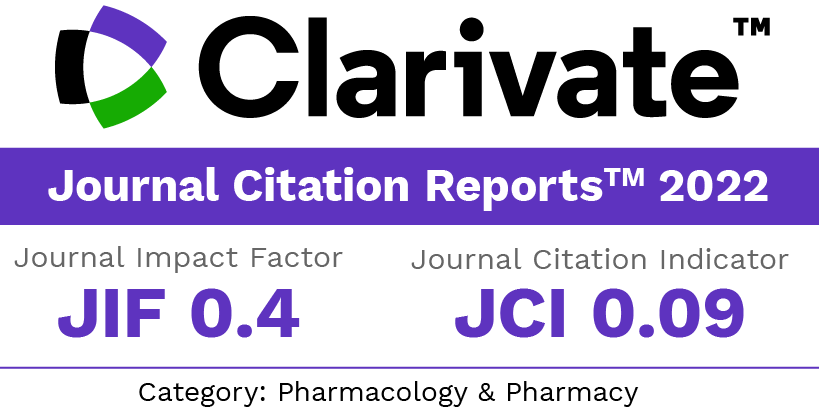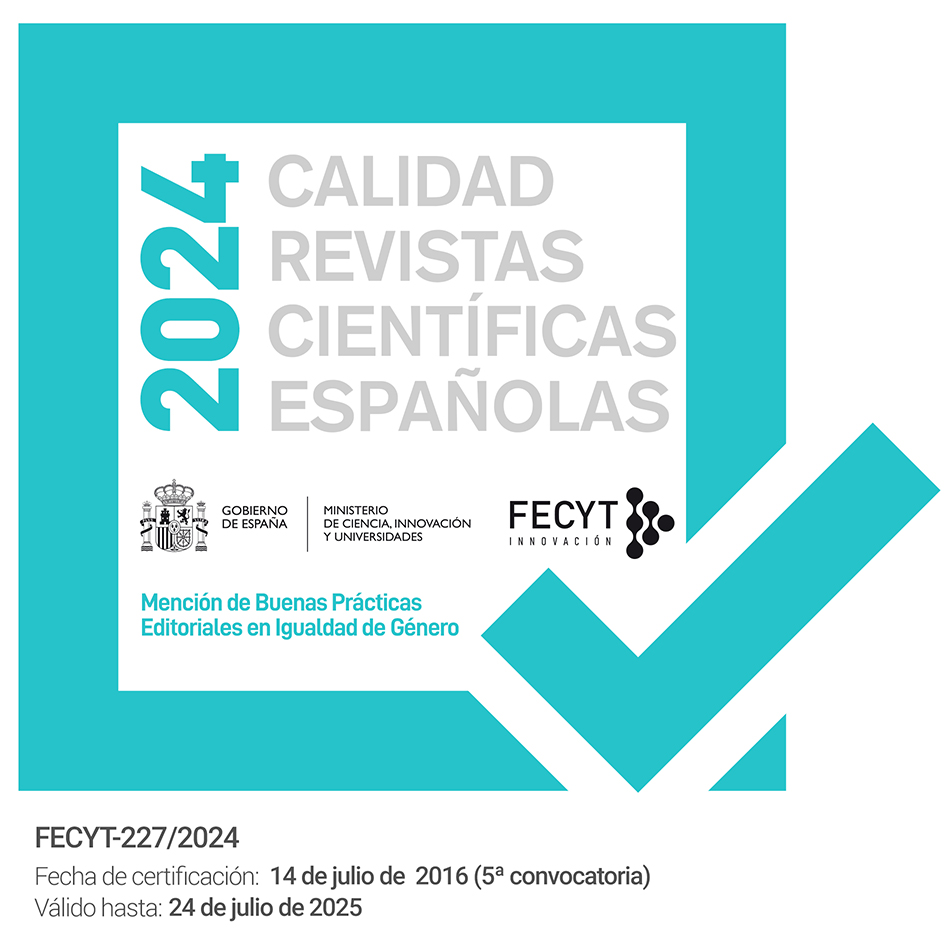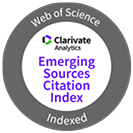Modulation of gene expression of antioxidant markers by Cynara scolymus extract in thioacetamide-induced liver injury in rats
DOI:
https://doi.org/10.30827/ars.v66i3.31860Keywords:
Cynara scolymus;, Gene expression;, Antioxidant enzymes;, Thioacetamide;, Hepatoprotection;, Catalase;, Glutathione peroxidase; ., Superoxide dismutaseAbstract
Introduction: This study evaluated the antioxidant potential of Cynara scolymus extract on the gene expression of liver antioxidant enzymes in a model of thioacetamide-induced liver damage in Wistar rats.
Method: Thirty male Wistar rats were administered thioacetamide at a dose of 100 mg/kg, intraperitoneally, twice a week for 8 weeks. The therapeutic potential of two doses of Cynara scolymus extract (100 and 200 mg/kg) was evaluated in comparison with silymarin as a standard treatment using spectrophotometry and polymerase chain reaction.
Results: Spectrophotometric analysis of the homogenized liver samples revealed a significant decrease in the lipid peroxidation marker malondialdehyde and a significant increase in the antioxidant molecules catalase, glutathione peroxidase and superoxide dismutase (restoration rates of 87 %, 95 % and 81 % normalized against silymarin). Analysis of gene expression revealed that treatment with Cynara scolymus extract (100 or 200 mg/kg, daily by oral route, for 8 weeks) produced a dose-dependent increase in the expression of antioxidant enzymes, surpassing the effects of standard silymarin. The Cynara Scolymus extract (100 mg/kg) increased the expression of catalase, glutathione peroxidase and superoxide dismutase up to 1.85 times, 1.76 times and 1.92 times, respectively. These effects were greater with 200 mg/kg, reaching 2.43 times for catalase, 2.24 times for glutathione peroxidase and 2.58 times for superoxide dismutase.
Conclusions: These findings suggest that Cynara scolymus exhibits powerful hepatoprotective effects through the regulation of the gene expression of antioxidant enzymes, constituting a promising therapeutic approach for the treatment of liver damage.
Downloads
References
El-Kot SM, Wanas W, Hafez AM, Mahmoud NA, Tolba AM, Younis AH, et al. Effect of silymarin on the relative gene expressions of some inflammatory cytokines in the liver of CCl4-intoxicated male rats. Sci Rep. 2023;13(1):15245. Doi:10.1038/s41598-023-42250-7 DOI: https://doi.org/10.1038/s41598-023-42250-7
Zimmerman BJ. Self-efficacy: An essential motive to learn. Contemporary educational psychology. 2000;25(1):82-91. Doi:10.1006/ceps.1999.1016 DOI: https://doi.org/10.1006/ceps.1999.1016
Sgro C, Clinard F, Ouazir K, Chanay H, Allard C, Guilleminet C, et al. Incidence of drug-induced hepatic injuries: a French population-based study. Hepatology. 2002;36(2):451-5. Doi:10.1053/jhep.2002.34857 DOI: https://doi.org/10.1053/jhep.2002.34857
Jabbar AA, Alamri ZZ, Abdulla MA, AlRashdi AS, Najmaldin SK, Zainel MA. Sinapic acid attenuate liver injury by modulating antioxidant activity and inflammatory cytokines in thioacetamide-induced liver cirrhosis in rats. Biomedicines. 2023;11(5):1447.Doi:10.3390/biomedicines11051447 DOI: https://doi.org/10.3390/biomedicines11051447
Akhtar T, Sheikh N. An overview of thioacetamide-induced hepatotoxicity. Toxin Rev. 2013;32(3):43-6. Doi:10.3109/15569543.2013.805144 DOI: https://doi.org/10.3109/15569543.2013.805144
Low TY, Leow CK, Salto-Tellez M, Chung MC. A proteomic analysis of thioacetamide-induced hepatotoxicity and cirrhosis in rat livers. Proteomics. 2004;4(12):3960-74. Doi:10.1002/pmic.200400852 DOI: https://doi.org/10.1002/pmic.200400852
Kang JS, Wanibuchi H, Morimura K, Wongpoomchai R, Chusiri Y, Gonzalez FJ, et al. Role of CYP2E1 in thioacetamide-induced mouse hepatotoxicity. Toxicol appl pharmacol. 2008;228(3):295-300. Doi:10.1016/j.taap.2007.11.010 DOI: https://doi.org/10.1016/j.taap.2007.11.010
Teksoy O, Sahinturk V, Cengiz M, İnal B, Ayhancı A. The protective effects of silymarin on Thioacetamide-Induced liver damage: measurement of miR-122, miR-192, and miR-194 levels. Appl Biochem Biotechnol. 2020;191(2):528-39. Doi:10.1007/s12010-019-03177-w DOI: https://doi.org/10.1007/s12010-019-03177-w
Jimenez-Escrig A, Dragsted LO, Daneshvar B, Pulido R, Saura-Calixto F. In vitro antioxidant activities of edible artichoke (Cynara scolymus L.) and effect on biomarkers of antioxidants in rats. J Agric Food Chem. 2003;51(18):5540-5. Doi: 10.1021/jf030047e DOI: https://doi.org/10.1021/jf030047e
Speroni E, Cervellati R, Govoni P, Guizzardi S, Renzulli C, Guerra M. Efficacy of different Cynara scolymus preparations on liver complaints. J Ethnopharmacol. 2003;86(2-3):203-11. Doi:10.1016/S0378-8741(03)00076-X DOI: https://doi.org/10.1016/S0378-8741(03)00076-X
Colak E, Ustuner MC, Tekin N, Colak E, Burukoglu D, Degirmenci I, et al. The hepatocurative effects of Cynara scolymus L. leaf extract on carbon tetrachloride-induced oxidative stress and hepatic injury in rats. SpringerPlus. 2016;5:1-9. Doi:10.1186/s40064-016-1894-1 DOI: https://doi.org/10.1186/s40064-016-1894-1
Keramati M, Musazadeh V, Ghadimi K. Antioxidant and Anti-inflammatory Effects of Artichoke or Cynara Scolymus L. as Promising Potential Therapeutic in Anemia. J Nutr Food Sec. 2022;7(1):129-35. Doi:10.18502/jnfs.v7i1.8544 DOI: https://doi.org/10.18502/jnfs.v7i1.8544
El-Deberky D, Rizk M, Elsayd F, Amin A, El-Mahmoudy A. Protective potential of Cynara scolymus extract in thioacetamide model of hepatic injury in rats. Bionatura. 2021;6(2):1792-802. Doi:10.21931/RB/2021.06.02.20 DOI: https://doi.org/10.21931/RB/2021.06.02.20
Giorgi D, Pandozy G, Farina A, Grosso V, Lucretti S, Crinò P, et al., editors. Karyotype of globe artichoke (Cynara cardunculus var. scolymus): preliminary studies to define its chromosome morphology. VIII International Symposium on Artichoke, Cardoon and their Wild Relatives 983; 2012. 10.17660/ActaHortic.2013.983.17 DOI: https://doi.org/10.17660/ActaHortic.2013.983.17
Bernacchi A, De Castro C, de Toranzo E, Marzi A, De Ferreyra E, De Fenos O, et al. Pyrazole prevention of CC14-induced ultrastructural changes in rat liver. Br J Exp Pathol. 1980;61(5):505. PMCID: PMC2041540
Zhu X, Zhang H, Lo R. Phenolic compounds from the leaf extract of artichoke (Cynara scolymus L.) and their antimicrobial activities. J Agric Food Chem. 2004;52(24):7272-8. https://doi.org/10.1111/j.1365-2621.2005.tb07106.x DOI: https://doi.org/10.1021/jf0490192
Yan-Yu X, Yun-mei S, Zhi-peng C, Qi-neng P. Preparation of silymarin proliposome: a new way to increase oral bioavailability of silymarin in beagle dogs. Intl J Pharm. 2006;319(1-2):162-8. https://doi.org/10.1016/j.ijpharm.2006.03.037 DOI: https://doi.org/10.1016/j.ijpharm.2006.03.037
Del Maestro R, McDonald W. Oxidative enzymes in tissue homogenates. Handbook of methods for oxygen radical research. 1985:291-6.
Nishikimi M, Roa N, Yogi K. Determination of superoxide dismutase in tissue homogenate. Biochem Bioph Res Commun. 1972;46:849-54. DOI:10.1007/s00216-011-5070-8 DOI: https://doi.org/10.1007/s00216-011-5070-8
Paglia DE, Valentine WN. Studies on the quantitative and qualitative characterization of erythrocyte glutathione peroxidase. J Clin Lab Med. 1967;70(1):158-69. PMID: 6066618
Aebi H. Catalase in vitro. Methods Enzymol. 1984;105:121-6. Doi:10.1016/S0076-6879(84)05016-3 DOI: https://doi.org/10.1016/S0076-6879(84)05016-3
Chomczynski P, Sacchi N. The single-step method of RNA isolation by acid guanidinium thiocyanate–phenol–chloroform extraction: twenty-something years on. Nature Protocols. 2006;1(2):581-5. Doi:10.1038/nprot.2006.83 DOI: https://doi.org/10.1038/nprot.2006.83
El-Boshy M, Ashshi A, Gaith M, Qusty N, Bokhary T, AlTaweel N, et al. Studies on the protective effect of the artichoke (Cynara scolymus) leaf extract against cadmium toxicity-induced oxidative stress, hepatorenal damage, and immunosuppressive and hematological disorders in rats. Environ Sci Pollut Res. 2017;24:12372-83. Doi:10.1007/s11356-017-8876-x DOI: https://doi.org/10.1007/s11356-017-8876-x
Seoudi DM, Saleh EM. Assessment of hepatoprotective and apoptotic efficacy of cynara scolymus leaf extract. Intl J Bioscie. 2018;12(1):300-14. Doi:10.12692/ijb/12.1.300-314 DOI: https://doi.org/10.12692/ijb/12.1.300-314
Banaee M, Impellitteri F, Multisanti CR, Sureda A, Arfuso F, Piccione G, et al. Evaluating silymarin extract as a potent antioxidant supplement in diazinon-exposed rainbow trout: oxidative stress and biochemical parameter analysis. Toxics. 2023;11(9):737.Doi:10.3390/toxics11090737 DOI: https://doi.org/10.3390/toxics11090737
Published
How to Cite
Issue
Section
License
Copyright (c) 2025 Deena Eldeberky, Abubakr M. El-Mahmoudy, Faten I. Elsayd

This work is licensed under a Creative Commons Attribution-NonCommercial-ShareAlike 4.0 International License.
The articles, which are published in this journal, are subject to the following terms in relation to the rights of patrimonial or exploitation:
- The authors will keep their copyright and guarantee to the journal the right of first publication of their work, which will be distributed with a Creative Commons BY-NC-SA 4.0 license that allows third parties to reuse the work whenever its author, quote the original source and do not make commercial use of it.
b. The authors may adopt other non-exclusive licensing agreements for the distribution of the published version of the work (e.g., deposit it in an institutional telematic file or publish it in a monographic volume) provided that the original source of its publication is indicated.
c. Authors are allowed and advised to disseminate their work through the Internet (e.g. in institutional repositories or on their website) before and during the submission process, which can produce interesting exchanges and increase citations of the published work. (See The effect of open access).























